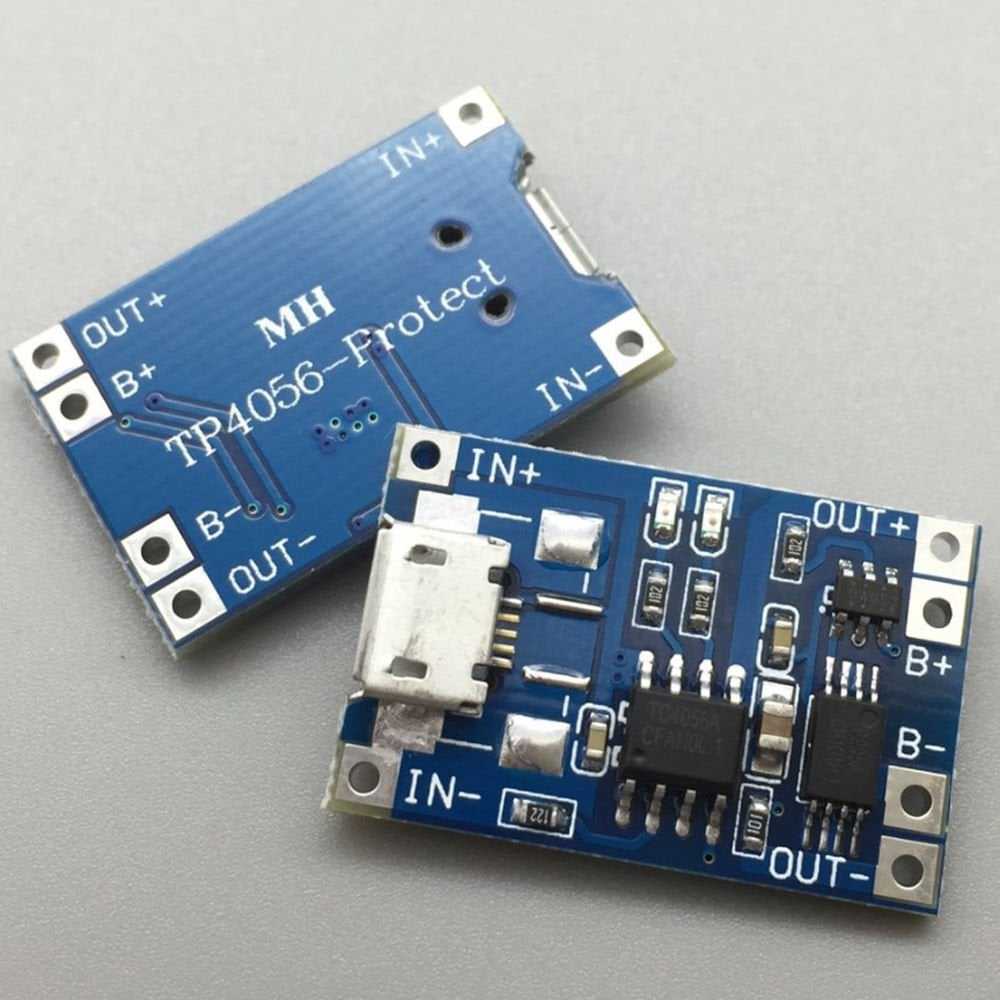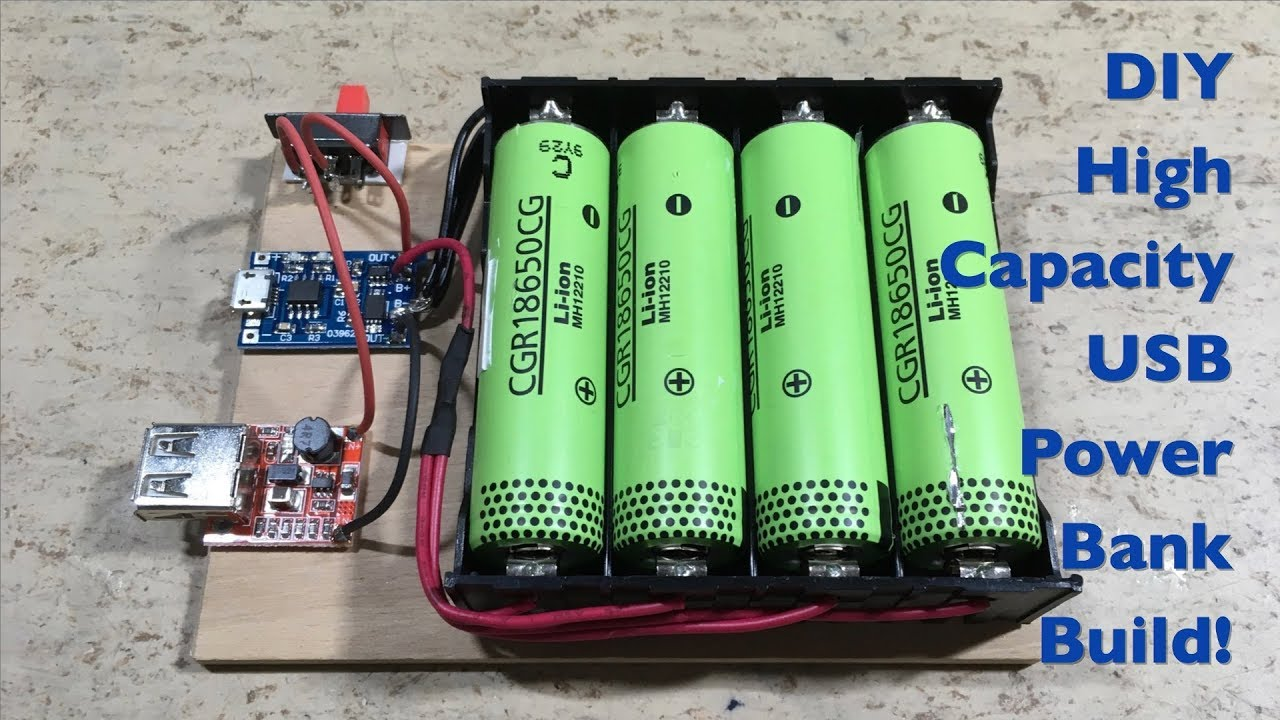When exploring options for lithium battery charge management, the TP4056 alternative, BQ25185, stands out for its impressive features and flexibility. Many makers favor the TP4056 due to its low cost and straightforward implementation, often found on convenient breakout boards. However, as demonstrated by [Lefty Maker], there are significant advantages to shifting to the BQ25185, particularly in customization and circuit design versatility. With its adjustable under- and over-charge protection voltages, this charge controller can be adapted to future battery technologies—a clear benefit over the TP4056. In this review, we will not only delve into the TP4056 vs BQ25185 comparison but also discuss the benefits of crafting a custom charge controller board tailored to your specific project needs and preferences.
The landscape of lithium battery management is ever-evolving, and in this context, discussing alternatives to standard charge controllers is crucial. Beyond the widely used TP4056, options like the BQ25185 present a compelling case for those looking to innovate and customize their battery charging solutions. This charge module comparison highlights the distinctions between off-the-shelf modules and bespoke designs that accommodate various project requirements. By examining alternatives such as the BQ25185, we open the door to tailor-made charging circuits that can adapt to changing technologies and user demands. Join us as we explore the nuances of these charge controllers and uncover how they can enhance your electronics projects.
The Benefits of the TP4056 Charge Controller
The TP4056 charge controller has been a staple in the DIY electronics community for a good reason. This simple, yet effective chip offers reliable charging capabilities for lithium batteries, making it an ideal choice for hobbyists and makers alike. With a low cost and widespread availability, it’s no surprise that many turn to the TP4056 for their charging needs. It is designed to provide a constant current/constant voltage (CC/CV) charging process, which is crucial for safely charging lithium batteries without risking overcharge or damage.
Moreover, the TP4056 is accessible due to the plethora of breakout boards available online. These modules come equipped with the essential components needed for basic charging functions, providing a convenient solution for rapid prototyping. Users can easily plug these boards into their projects, making it an attractive option for anyone looking to build devices powered by lithium batteries. However, there are notable limitations to these cheap modules that users should be aware of.
Frequently Asked Questions
What are the main differences between TP4056 and BQ25185 lithium battery charge controllers?
The TP4056 is widely regarded for its simplicity and low cost, ideal for basic lithium battery charging applications. In contrast, the BQ25185 offers enhanced features such as adjustable under- and over-charge protection, making it more versatile for advanced projects. While the TP4056 is easy to use, the BQ25185 provides additional flexibility for future-proofing due to its adjustable parameters.
Is the BQ25185 a better alternative to the TP4056 for custom charge controller boards?
Yes, the BQ25185 can be a better alternative for custom charge controller boards due to its customizable features. It allows for adjustments in charging current and voltages, which can be beneficial for makers looking to design specific applications. This flexibility contrasts with the more straightforward configuration of the TP4056.
How does the TP4056 vs BQ25185 comparison impact project design for lithium batteries?
When comparing TP4056 and BQ25185, the choice significantly impacts project design. The TP4056 is excellent for quick, hassle-free setups, while the BQ25185 supports adjustable specifications catering to diverse battery types and future project needs. Choosing the right chip depends on the complexity and requirements of your design.
What are the advantages of using a custom charge controller board over a TP4056 module?
Custom charge controller boards, like those using the BQ25185, offer several advantages over ready-made TP4056 modules, including the ability to customize features such as mounting holes, USB-PD support, and additional functionalities like indicator LEDs. This adaptability allows makers to create optimized designs tailored to specific project needs.
Are there cost considerations when opting for BQ25185 over TP4056 for lithium battery charging?
Yes, there are cost considerations when choosing between BQ25185 and TP4056. The BQ25185 costs more, reflecting a significant price increase of over 300%. While it offers better features, budget-conscious projects may still prefer the simplicity and affordability of the TP4056 for straightforward applications.
Can I still use TP4056 for advanced projects, or should I transition to BQ25185?
While the TP4056 can be utilized in advanced projects, its limitations may prompt a transition to the BQ25185 for those who require more customizable options. The choice ultimately depends on project specifications—if flexibility and advanced features are essential, the BQ25185 is the better option.
What features make the BQ25185 appealing compared to the TP4056 in charge module comparisons?
The BQ25185 stands out in charge module comparisons for its adjustable charge parameters, over-charge protection, and compatibility with various battery types, making it appealing for versatile applications. In contrast, TP4056 modules lack these features and are better suited for simpler tasks, which limits their adaptability.
Are there any downsides to using the BQ25185 over the TP4056 in a DIY project?
One downside to using the BQ25185 over the TP4056 in DIY projects is the increased cost, which might not be justified for simpler applications. Additionally, the BQ25185 requires more careful design considerations due to its adjustable parameters, which may complicate projects for those accustomed to the straightforward TP4056.
| Key Point | Details |
|---|---|
| TP4056 Overview | Common charge-controller chip for lithium batteries favored for its low cost. |
| Criticism by Lefty Maker | Points out limitations of cheap modules, such as lack of mounting holes and proper USB-PD support. |
| Alternative Suggested | BQ25185 by TI is proposed for its flexibility and adjustable features. |
| Custom Board Creation | Promotes making custom charge boards for better features and personalization. |
| Cost Consideration | BQ25185 is more expensive, with a significant price increase over TP4056. |
| Final Verdict | While alternatives exist, TP4056 is still favored for simplicity. |
Summary
The TP4056 alternative, the BQ25185, offers advanced features but comes at a higher cost. Lefty Maker’s video highlights the limitations of the TP4056 and promotes the benefits of custom board creation for specific project needs. Despite the advantages of the BQ25185, such as flexibility for future battery technologies, many still see the TP4056 as the simplest and most cost-effective choice for charging lithium batteries.



